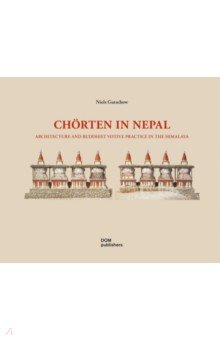Описание книги
For more than two millennia Buddhism shaped the cultures of Central, South, Southeast, and East Asia. From ancient Bactria and Gandhara to Tibet, Mongolia, and Japan, from Sri Lanka and Myanmar to Thailand, Cambodia, and Laos, each territory had its own peculiar way of developing representations of the Buddha, the Bodhisattvas, and a variety of guardian deities and saints. Of particular importance is the representation of the Buddha and his teachings in an iconic form in the shape of an impassable building.
Called Stupa in Sanskrit, Caitya in Nepali, Cibha in Newari, and Chorten in Tibetan, these structures – whether imposing or in miniature size – not only characterise the urban space of the Newars in the Kathmandu Valley. They also mark the access to Tibetan villages in northern Nepal, line the trails across high passes, and stud topographically prominent places. By their thousands, they transform wilderness into a landscape that promises shelter, protection, and well-being. Often, these structures are small, made up of two or three cubes in diminishing size, placed on top of one another. Of particular importance are the Triple Protectors, the Rigsum Gonpo, in the shape of three multiple cubes, lined up to guard the settlements against calamities such as floods, landslides, pests, and plagues. To ensure their agency, their colours (black, white, red) are annually renewed. Single cubes may also signal their significance as repositories of relics or the ashes of the departed.
584 maps, architectural drawings, and photographs, produced from 1970 to 2008, document the rich cultural heritage of the Tibetan and Tamang enclaves along the range of the high Himalaya.
